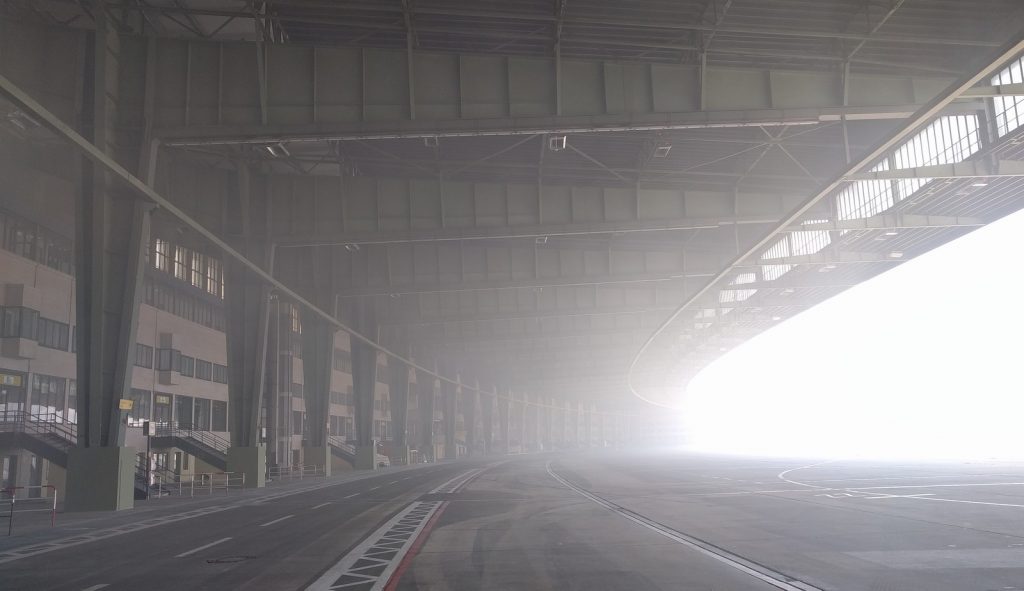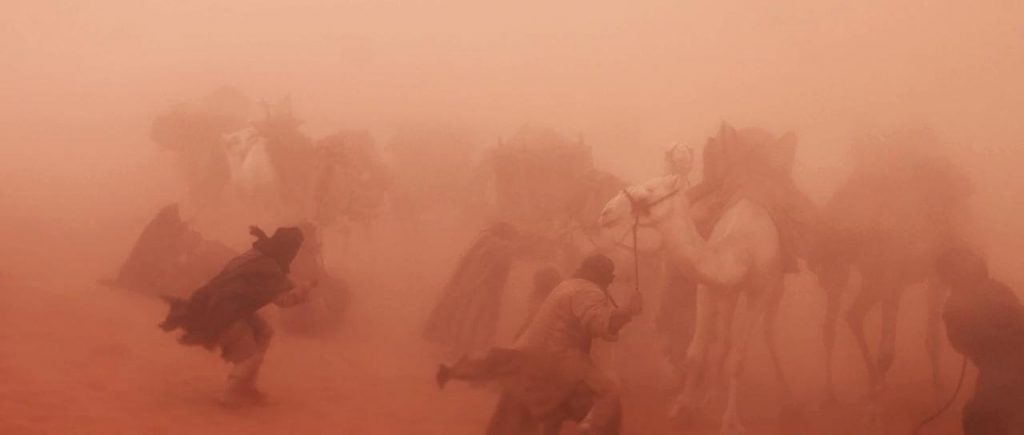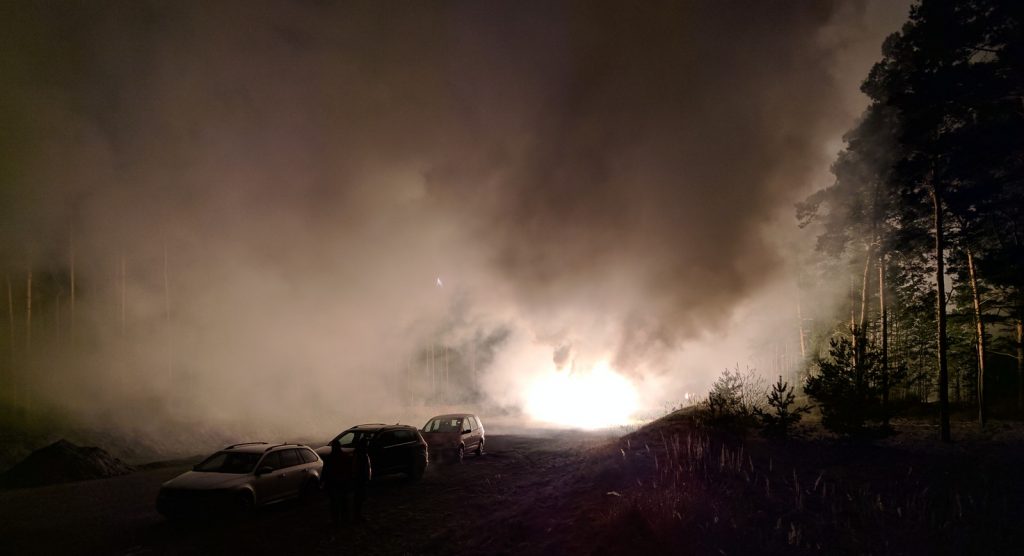Smoke • Fog • Dust
Scientifically speaking, there are worlds in between, but due to their visual similarity on screen, we usually group fog, smoke and dust together under the term “Atmo”.
Without them there is no smoky corner pub, no foggy streets, no staged sandstorm. Sunbeams in rooms would not be visible and industrial environments without thick fog and steaming pipes lacked credibility.
The requirements here are high. We have more than 60 different devices to choose from and some of them in several sizes. We know exactly what materials we use and know if and for how long actors are allowed to expose themselves to them. This is of particular importance when using dusts on the set. Some atmo and set effects can only be achieved by using them and require precise knowledge of suitable materials.
Today, certainly every equipment rental company will rent you a “fog machine”; but pay attention to the amount of time it takes you until the effect finally is ready on set if setup by an unexperienced team. And if you don’t already know the following problems:
Too much, too little, doesn’t sink to the ground, is gone after two minutes, the whole set is fogged up, machine doesn’t do what it’s supposed to do, fluid depleted, wind problems…
For us, dealing with fog, smoke and dust is part of our daily work and we create every atmosphere in sets of any size — be it small rooms, industrial halls or in the forest over 100,000m2.



What is there to consider?
BASICS
Depending on the desired result, we have to use specific equipment and materials and for this reason we then commit ourselves to a special effect category. For example, a hazer-system cannot produce an extremely dense fog and fog machines are not suitable for haze. Therefore, precise and advance planning that takes into account the scenic requirements and local environment is essential.
The duration of use also plays a role, as some atmo fluids are not suitable for multiple days of exposure. In such cases, we then offer to work with alternative technologies.
ON LOCATION
Please note that in some historical buildings many atmo effects may not be carried out for reasons of monument conservation. However, we can usually work out alternatives.
This is usually not a problem outdoors, but the factor wind has to be taken into account. The finer and more uniform an effect, the less wind we can use. We can compensate wind to a certain degree by using special technology, but in case of an emergency it can sometimes be impossible to achieve an effect.
Buildings must be checked for the presence of a fire alarm system before performing atmo effects and it must be deactivated. Existing ventilation systems should also be switched off if necessary.
IN THE STUDIO
Atmo effects in a studio are usually trouble-free; however, you should also pay attention to fire alarm and ventilation systems.
ACTORS
For a limited period of time, all our effects are well tolerated. Should actors suffer from a respiratory tract problem, please contact us if applicable.
CREW & EQUIPMENT
In the rarest of cases, problems arise for equipment on set. However, the crew should be prepared for poorer visibility conditions beyond illuminated areas.